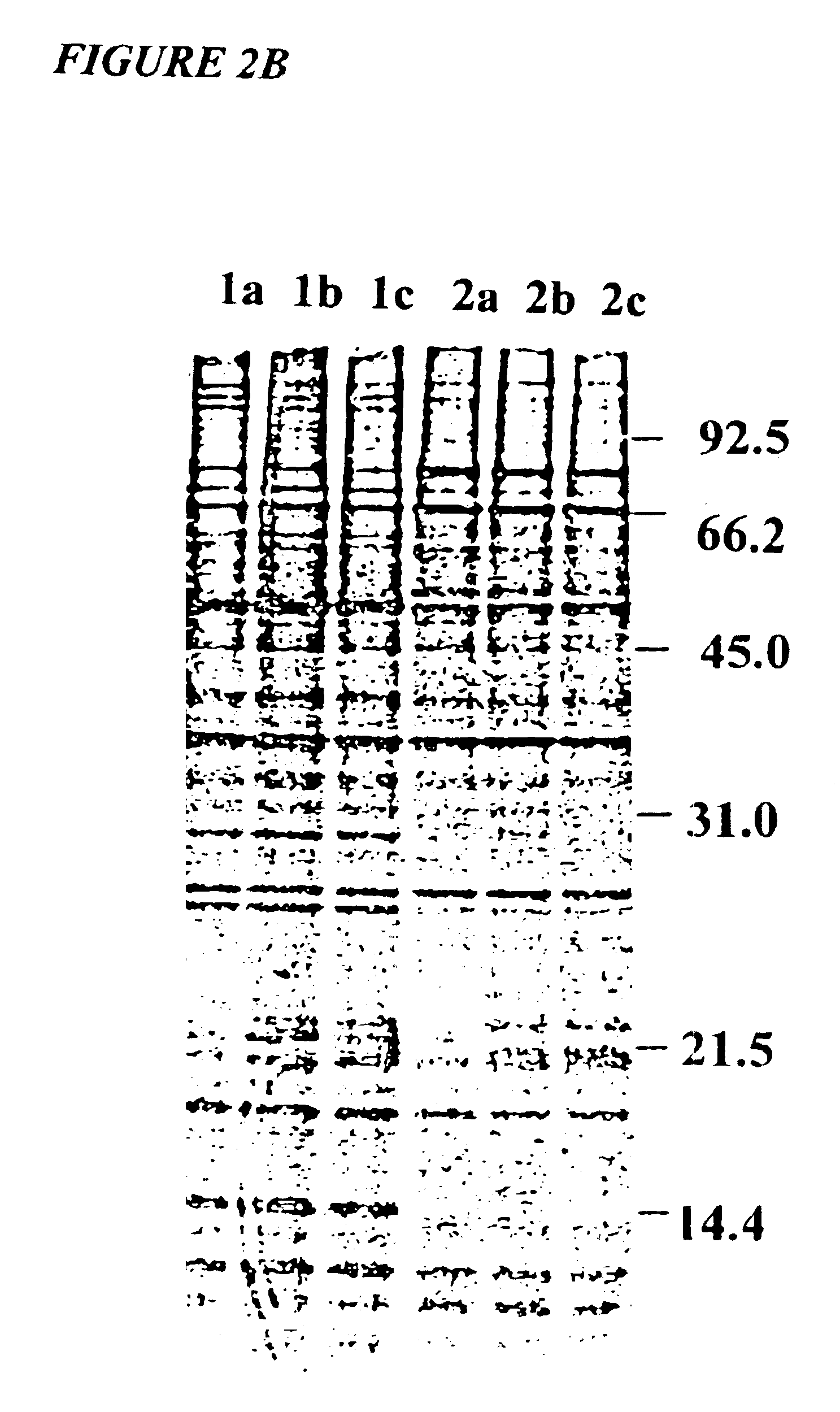Oncogenes and methods for their detection
a technology of oncogenes and methods, applied in the field of molecular biology, to achieve the effect of illiciting an immune respons
- Summary
- Abstract
- Description
- Claims
- Application Information
AI Technical Summary
Benefits of technology
Problems solved by technology
Method used
Image
Examples
example 2
Definition of DNA Fragment Containing Transforming Sequences
Transforming DNAs, obtained from the EJ cell line as described in Example 1, were exposed to various restriction endonucleases prior to transfection and tested to see whether the biological activity of the DNA survived enzyme treatment. Survival of biological activity would indicate that the functionally essential sequences were carried entirely within one of the many DNA fragments generated after enzyme treatment.
KpnI and PvuII were found to inactivate the transforming potency of DNAs prepared from EJ tumor cells. EcoRI was found to spare the biological activity. Identical results were obtained when cultures were grown up from transfected foci and their DNAs tested by enzyme treatment prior to a second round of transfection. It was concluded, therefore, that the transforming sequences were contained entirely within one EcoRI-generated fragment of EJ bladder carcinoma DNA.
example 3
Detection and Identification of the Transforming DNA Segment for Sequence Hybridization
That fraction of human DNA which self-anneals at a rate of Cot=1 or less was employed as a probe. This probe was prepared from total cellular DNA from a human bladder carcinoma cell line A1663. The DNA concentration was adjusted to 125 ug per ml in 0.01 M PIPES buffer (pH 6.8), and sonicated to ca. 400 bp size fragments. Denaturation was done by boiling at 100.degree. C. for ten min. The NaCl concentration was adjusted to 0.3 M and reannealing performed at 68.degree. C. for 40 min. The solution was quenched on ice, equal volumes of 2.times.S1 buffer (0.50 M NaCl, 0.06 M NaOAc, 2 mM ZnSo.sub.4, 10% glycerol, pH 4.5) was added, followed by addition of 20 ul S1 enzyme (Boehringer, 10.sup.3 units per ul). This was incubated at 37.degree. C. for one hour. 1 M Na-phosphate buffer (equimolar mixture of Na.sub.2 HPO.sub.4 and NaH.sub.2 PO.sub.4) was added to 0.12 M Na-phosphate final concentration and the...
example 4
Molecular Cloning of a Transforming Segment
The strategy for molecular cloning of the large EcoRI fragment and associated oncogene began with insertion of EcoRI fragments of a 2.degree. transfectant into lambdaphage vectors. The plan was to screen for components of the resulting library that exhibited sequences reactive with the Cot=1 probe. However, the EcoRI fragment containing the oncogene seen in the Southern blot had a size of about 25 kb, which exceeded the carrying capacity of available lambdaphage vectors. Nevertheless, in occasional 2.degree. transfectants, smaller versions of the large Alu-containing EcoRI fragments had been observed. Such smaller fragments appeared to have resulted from mechanical breakage of the DNAs prior to transfection. Thus, truncated DNA fragments carrying the transforming and Alu sequences appear to have been become fused after transfection with new arrays of EcoRI sites present in co-transfected DNA.
An example of such DNA of the 2.degree. focus lin...
PUM
 Login to View More
Login to View More Abstract
Description
Claims
Application Information
 Login to View More
Login to View More - R&D
- Intellectual Property
- Life Sciences
- Materials
- Tech Scout
- Unparalleled Data Quality
- Higher Quality Content
- 60% Fewer Hallucinations
Browse by: Latest US Patents, China's latest patents, Technical Efficacy Thesaurus, Application Domain, Technology Topic, Popular Technical Reports.
© 2025 PatSnap. All rights reserved.Legal|Privacy policy|Modern Slavery Act Transparency Statement|Sitemap|About US| Contact US: help@patsnap.com



